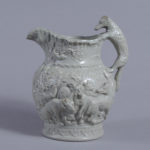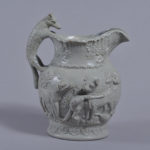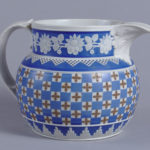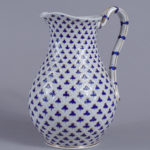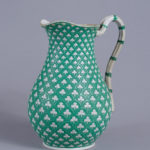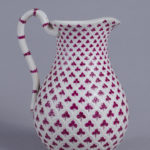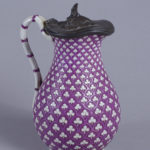Making and Molding
The British ceramic industry controlled the commercial production of European decorative and utilitarian ceramics by the middle of the eighteenth century. Relief-molded jugs, popular a century later, are part of that long tradition of innovation in ware type, ornament and production. Borrowing from sculptural techniques, potters used plaster molds which enabled cheaper and more complex decorative patterns. Newer methods and materials coupled with changing class structures and soaring consumer demand created extremely desirable useful wares.

